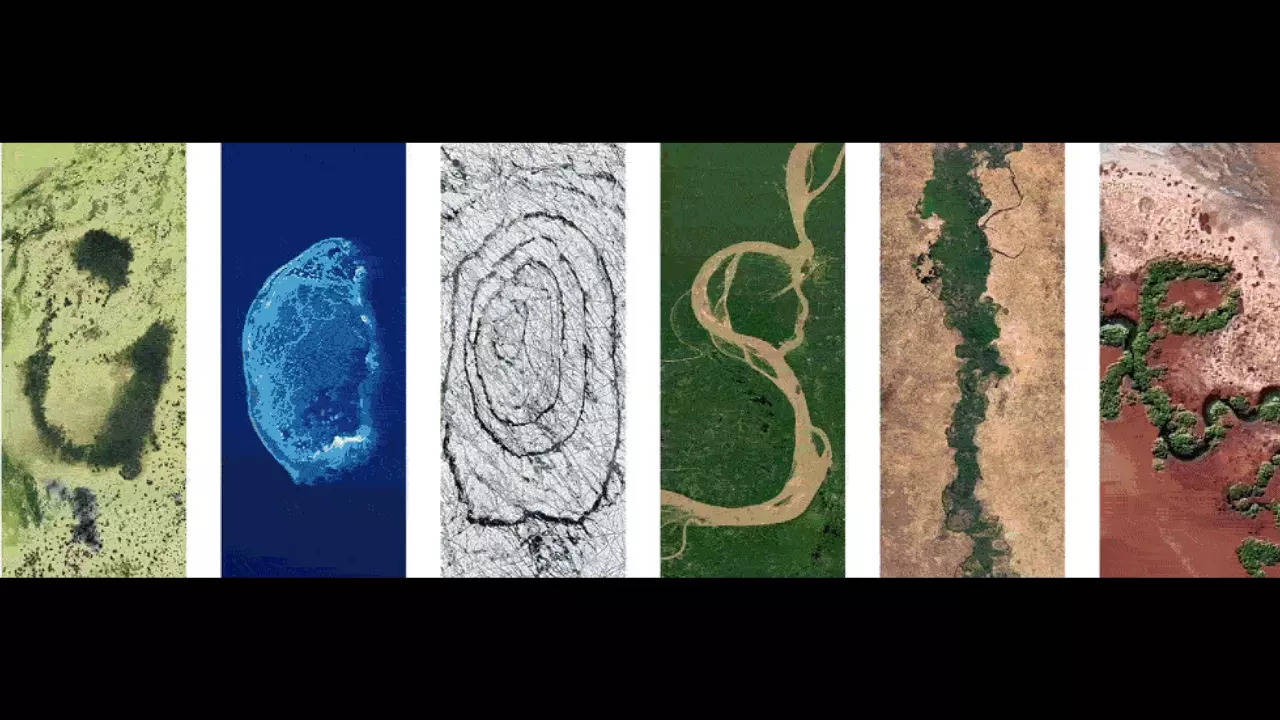Earth Day 2024 Google Doodle Spotlights Climate Change
Google Doodle curators have unveiled a special interactive animation for Earth Day 2024 that spotlights the urgency of climate change. The doodle features aerial photographs of our planet’s diverse ecosystems, including glaciers and deserts. This temporary change alteration of the Google homepage logo will be on display throughout April 22 in most countries.

The 2024 Earth Day Google Doodle features satellite imagery of various ecosystems. | Courtesy: Google
KEY HIGHLIGHTS
- Earth Day is celebrated on April 22 to raise awareness about environmental issues and conservation efforts.
- A Google Doodle featuring aerial photographs of different ecosystems on our planet is on display on the search engine's homepage.
- 'These examples offer the promise of hope and optimism, but also remind us that there's much more to do to address the climate crisis and biodiversity loss,' Google said.
Google Doodle curators have unveiled a special interactive animation for Earth Day 2024 that spotlights the urgency of climate change. The doodle features aerial photographs of our planet’s diverse ecosystems, including glaciers and deserts. This temporary change alteration of the Google homepage logo will be on display throughout April 22 in most countries.
“The Google letters showcase some of the places across the globe where people, communities and governments work every day to help protect the planet’s natural beauty, biodiversity and resources,” a description of the Google Doodle reads.
“These examples offer the promise of hope and optimism, but also remind us that there's much more to do to address the climate crisis and biodiversity loss.”

Google further explained where each of the letters in its doodle is located on Earth and how, after decades of conservation efforts and advocacy, these fragile ecosystems are still vulnerable to anthropogenic activities such as deforestation, pollution and habitat destruction.
G: Turks and Caicos Islands. The islands are home to important biodiversity areas with conservation efforts aimed at addressing ongoing environmental challenges, including protecting natural resources and reefs and restoring endangered species like the Turks and Caicos Islands rock iguana.
O: Scorpion Reef National Park, Mexico. Also known as Arrecife de Alacranes, this is the largest reef in the southern Gulf of Mexico and UNESCO biosphere reserve. The marine protected area serves as a refuge for complex coral and several endangered bird and turtle species.
O: Vatnajökull National Park, Iceland. Established as a national park in 2008 after decades of advocacy, this UNESCO World Heritage Site protects the ecosystem in and around Europe’s largest glacier. The mix of volcanoes and glacial ice produce rare landscapes and flora.
G: Jaú National Park, Brazil. Also known as Parque Nacional do Jaú, this is one of South America’s largest forest reserves and a UNESCO World Heritage Site. Located in the heart of the Amazon rainforest, it protects a huge range of species, including the margay, jaguar, giant otter, and the Amazonian manatee.
L: Great Green Wall, Nigeria. Started in 2007, this African Union-led initiative is restoring land affected by desertification across the width of Africa, planting trees and other vegetation while implementing sustainable land management practices. This also provides the people and communities in the area with increased economic opportunities, food security, and climate resilience.
E: Pilbara Islands Nature Reserves, Australia. Located by one of the Pilbara Island Nature Reserves, one of 20 nature reserves in Australia that help protect fragile ecosystems, increasingly rare natural habitats, and a number of threatened or endangered species—including multiple species of marine turtles, shorebirds, and seabirds.
Trending:
End of Article
Subscribe to our daily Newsletter!
Related News





Viral Video: Biker Cheats Death in Jaw-Dropping Escape at Railway Crossing. Watch

'Pani Mai Crocodile...': Video Of Tourist Leaning To Edge Of Rafting Boat In Rishikesh Is Hilarious And Scary

Nagaland Lottery Sambad 1Pm, 6PM, 8PM Result LIVE 04.05.2024; Dear Narmada Saturday; Rs 1 Crore First Prize

Brain Teaser: Can You Find The 3 Differences In These Zootopia Pictures In 30 Seconds?

LinkedIn Connection Request Warns CEO Not to Poach Rival Company Staff, Goes Viral









